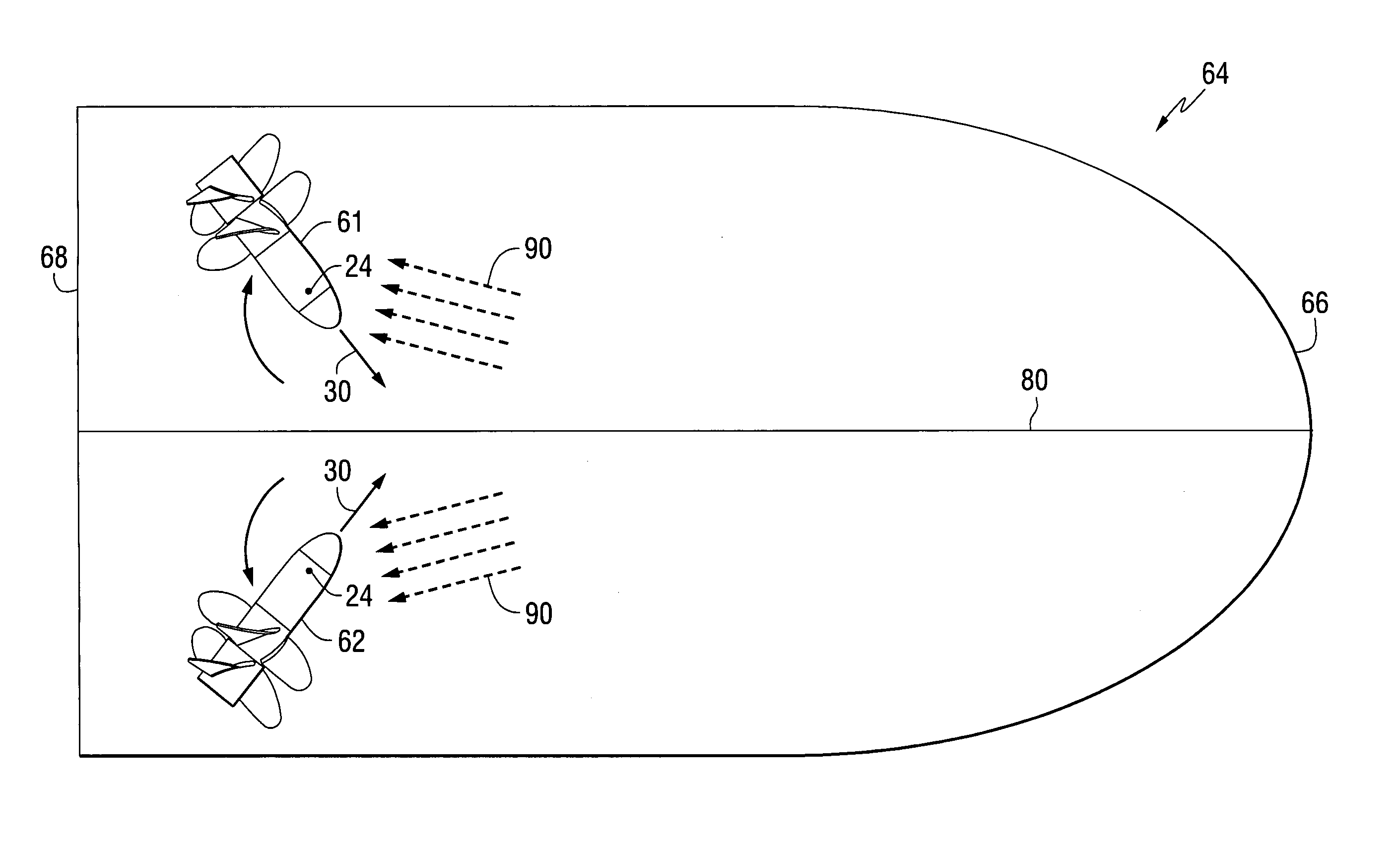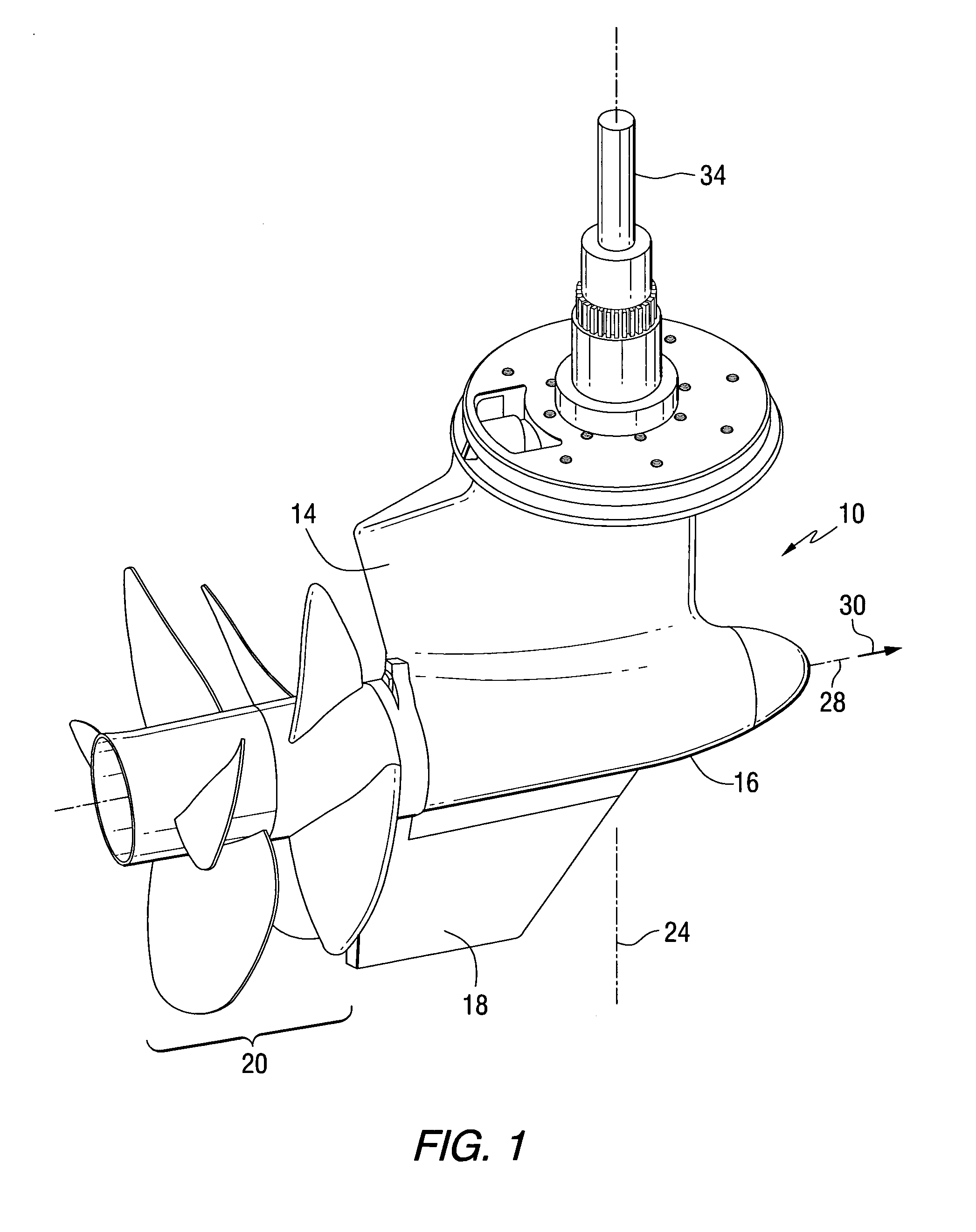Method for braking a vessel with two marine propulsion devices
a technology of propulsion device and braking device, which is applied in the direction of marine propulsion, special-purpose vessels, vessel construction, etc., can solve the problems of significant cavitation and adverse effects on the efficiency of the braking force caused by the reverse propeller
- Summary
- Abstract
- Description
- Claims
- Application Information
AI Technical Summary
Benefits of technology
Problems solved by technology
Method used
Image
Examples
Embodiment Construction
[0034]Throughout the description of the preferred embodiment of the present invention, like components will be identified by like reference numerals.
[0035]FIG. 1 is an isometric representation of a marine propulsion device 10. It is configured to extend downwardly through a hull and into the water below a marine vessel. The driveshaft housing 14, gear case 16, skeg 18, and the propellers 20 are supported below the wetted hull of a marine vessel. The marine propulsion device 10 is configured to be rotatable about a generally vertical steering axis 24. The propellers 20 are attached to a propeller shaft (not shown in FIG. 1) which is supported for rotation about a propeller shaft axis 28. The propellers 20 generate a thrust in a thrust direction 30 as represented by the arrow in FIG. 1.
[0036]FIG. 2 shows the marine propulsion device 10 in combination with other components that are used to provide torque for the driveshaft 34, shown in FIG. 1, and the necessary force to affectuate stee...
PUM
 Login to View More
Login to View More Abstract
Description
Claims
Application Information
 Login to View More
Login to View More - R&D
- Intellectual Property
- Life Sciences
- Materials
- Tech Scout
- Unparalleled Data Quality
- Higher Quality Content
- 60% Fewer Hallucinations
Browse by: Latest US Patents, China's latest patents, Technical Efficacy Thesaurus, Application Domain, Technology Topic, Popular Technical Reports.
© 2025 PatSnap. All rights reserved.Legal|Privacy policy|Modern Slavery Act Transparency Statement|Sitemap|About US| Contact US: help@patsnap.com



